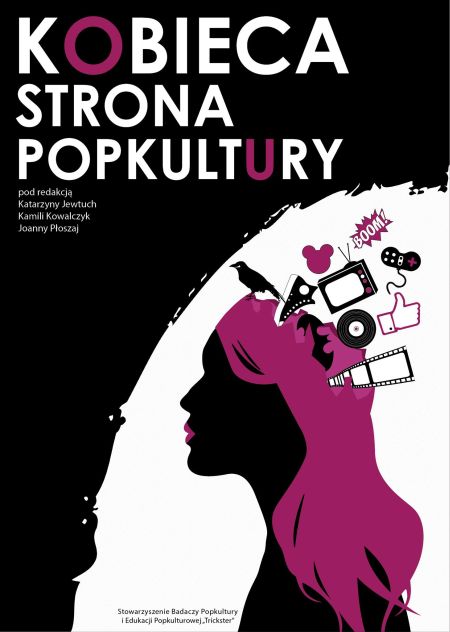We would like to invite you to read the latest eight volume published by the Trickster Association – this time focusing on the issue of femininity in pop culture. The authors analyse, among others, the link between fashion and pornography, the problem of sexism in video games or canons of female beauty in advertising. The publication is available in full on the website of the association free of charge.
The publication consists of 12 different texts which situate women in the context of certain cultural phenomena or analysing the functions of women as authors in order to describe a selected field using the creator’s contribution. Their authors write about subjects such as creation of Katniss Everdeen, the protagonist of The Hunger Games series, analyse the femininity and masculinity in 07 zgłoś się (in the context of the book later adapted into TV series), present the history and the transformations of the international phenomenon, the Barbie doll, or compare the image of Madonna and Lady Gaga in order to present how people play with images of femininity with the dispute over feminism and camp in the background. The heroines of the volume are also Sylvia Plath, lovers of Mordimer Madderdin from the „Inquisitor Series” [Cykl Inkwizytorski] by Jacek Piekara or pornstar Sasha Grey.
Editors of the volume – Katarzyna Jewtuch, Kamila Kowalczyk and Joanna Płoszaj – emphasise that pop culture in the context of femininity is a very interesting field of research. Emancipation is intertwined with a strong stereotyping. The traditional division into male and female characters is getting blurred and the diversity of how they are constructed is disappearing. – We also wanted to analyse not only the non-traditional women roles which are numerous in contemporary culture but also the problem of stereotyping female characters – points out Katarzyna Jewtuch in the foreword.
– We hope that the publication will contribute to discussions on gender in pop culture, including those dedicated to the male side. Such a comparison would make it possible to take a look not only at gender stereotypes which appear in contemporary culture but also to analyse the changes which occur in defining roles taken by men and women – adds Jewtuch.
The volume is the result of a scientific conference „Feminine side of pop culture” [Kobieca strona popkultury] (Wrocław, March 2015). It includes texts of authors from universities of Gdańsk, Łódź, Opole, Rzeszów, Wrocław, Adam Mickiewicz University in Poznań and Marie Curie-Skłodowska University in Lublin, as well as AGH University of Science and Technology in Kraków. The publication was reviewed by dr hab. Monika Talarczyk-Gubała of Łódź Film School.
– Researchers explore almost all areas of pop culture such as video games, websites, pornographic films, music stations and illustrated magazines for women, young adult novels, children’s toys, TV commercials – writes dr hab. Monika Talarczyk-Gubała. – What is visible throughout their work is the conviction about the weight of pop-cultural messages due to the extent of their impact and the influence on the lives of their recipients which can take the form of an innocent hobby but also a decision about a radical plastic surgery.
The publication can be downloaded HERE.
„The feminine side of pop culture” is the eight volume published by The Association of Pop Culture Researchers and Pop-cultural Education „Trickster”. Previous publications can also be downloaded from the Association website. So far the Trickster has issued:
– „The Witcher – the hero of mass imagination” [Wiedźmin – bohater masowej wyobraźni],
– „The Witcher – Polish pop culture phenomenon” [Wiedźmin – polski fenomen popkultury],
– „Ukraine: narratives, languages, stories” [Ukraina: narracje, języki, historie],
– „Horror in Polish culture” [Groza w kulturze polskiej]
„Role-playing games. Culture – practice – contexts” [Gry fabularne. Kultura – praktyki – konteksty]
as well as the publications from members of the Association which are available on our website:
– D. Głownia, „Six views on Japanese cinema.” [Sześć widoków na kinematografię japońską].
